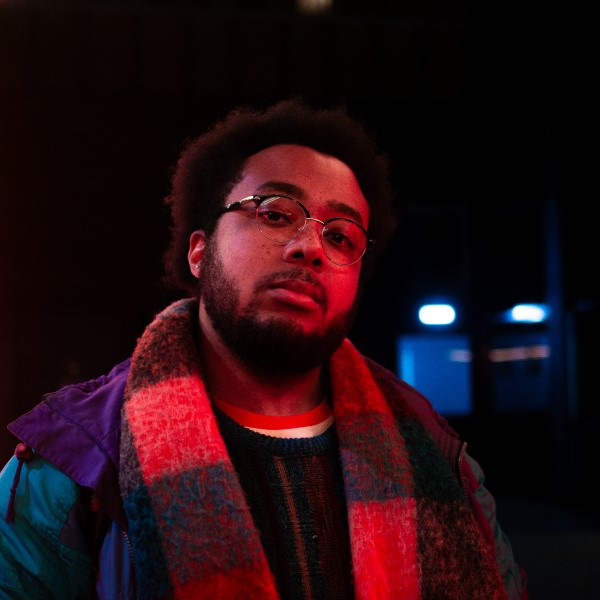Hi Alex! Can you introduce yourself and tell us about any games you’ve worked on?
Hey, my name is Alex Earle and I’ve worked in the games industry for the past eight years and I’m currently a Producer at a studio called Radical Forge.
I’m a big fan of virtual reality, both personally and professionally and have worked as a developer on numerous indie VR titles, including Gun Jam VR, Orbeats and Spaceteam VR for Meta Quest headsets.

What is Virtual Reality?
In 2024, I’d say that virtual reality (VR) applies to any Head-Mounted Display (HMD) that a user would wear and use to interact with rendered images and audio via their hands and arms, voice, eyes or a set of controllers. Often these devices are standalone, which means all the computing is done on the device itself – although some headsets can also link to or require linking to a separate PC or console to compute and render what you see, hear and do in VR.
A number of current popular standalone VR devices, such as the Apple Vision Pro or the Quest 3, also offer Mixed Reality (MR). In MR, users can see the real world while inside their headset and virtual elements can be rendered on top of that real-world image, due to the camera and depth tracking systems. MR is currently gaining a lot of popularity due to it being a less isolating experience than VR. Also, MR content is much easier for new and inexperienced users to use, as they can visually ground themselves with familiar elements from their real-world environment.
How is making a VR game different to a standard game?
Developing a title for VR comes with a whole world of new design and user experience considerations. For example, something as simple as movement can cause users to feel incredibly motion-sick when using VR. While there are multiple methods of implementing movement (like teleportation, smooth locomotion or room-scale movement); there is still a chance that any of them can make players feel sick or uncomfortable. To mitigate this, it’s always good to provide a range of movement options wherever possible to ensure that players can find where the sweet spot is for them.
Interactions are another key area. Pressing a button on a controller for action is a standard expectation in non-VR games, however, in VR this act can be immersion breaking as pressing a controller button doesn’t line up with the actions occurring in the game.
Personally, I like to see VR experiences as a form of theatre. As developers, we are doing everything we can to keep the players immersed in the scenario and environment that we build for them. As a result of that immersion, VR players expect a level of tactility where they can press, grab and pick up objects in the game world—and they should behave as you expect them to. Ensuring this is the case helps pull the players deeper into the ‘theatre’ as their direct actions have a tangible effect on the virtual world around them.
Another area where a specific balance must be found is art. While standalone VR devices offer freedom of movement (due to the lack of wires connecting to other devices), the computing power on these devices is quite limited compared to a gaming PC or current-gen games console. As a result, we as the developers have to find the sweet spot of offering enough artistic and graphical fidelity to immerse players into the environment, while also making an experience that can run at a smooth and high framerate (usually 72, 90 or 120 frames per second) to provide a fluid and comfortable experience to players
So what do you think is the future of VR?
I think that the future of VR is offering users unique experiences that they can’t have anywhere else.
At the moment, mainstream VR is very focused around gaming, fitness and productivity—and all of these cover important areas, offering some fantastic applications which I engage with daily. However, I believe VR will come into its own when there are more artistic experiences readily available—for example, VR concerts. While these are already happening, many of them are just 360 video experiences which can be watched from a headset. However, there are a few examples of bespoke designed music experiences that immerse you within the world of an album.
One of my favourite examples of this comes from the 2020 lockdown, when the studio Tender Claws used their game The Under Presents to offer interactive performances of Shakespeare’s The Tempest in VR. Within that experience, you could be part of the cast, cast spells and see the world changing around as the play evolved—and I believe that experiences like this are the future of VR.
Technology-wise, there will always be more computing power, higher resolutions to reach and new elements to track like eyes, facial expressions and body tracking (many of which already can be tracked on some current high-end devices). The true success of VR will be combining unique experiences with affordable hardware, as most people do not have $3500 to spend on niche immersive products like the Apple Vision Pro.